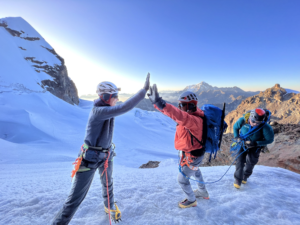7 Reasons You Should Climb in Bolivia
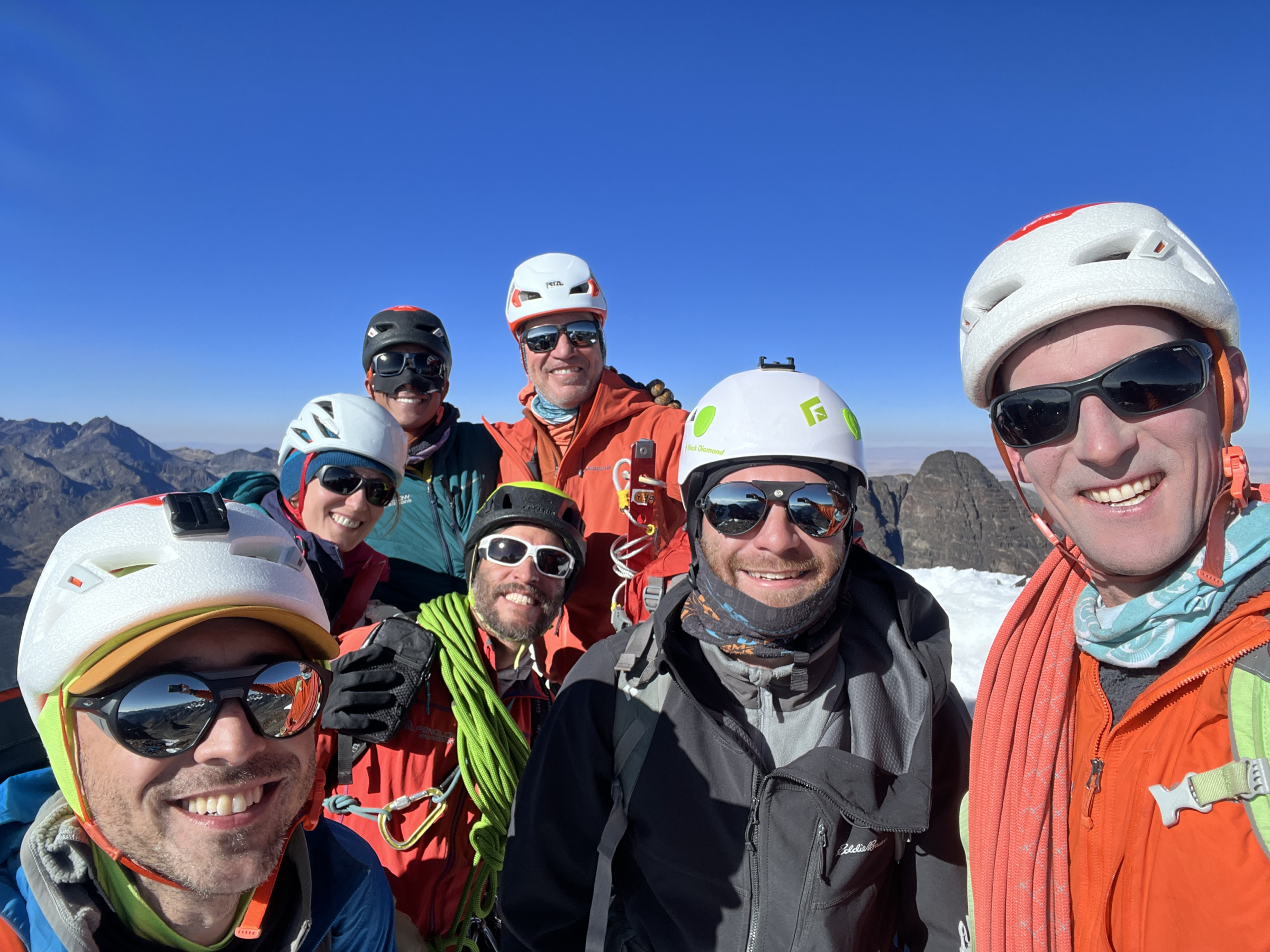
Written by Mike Pond
This summer, an Alpenglow team of four led by guides Gaspar Navarrete, Mike Pond, and Isaac Laredo climbed Pequeño Alpamayo, Huayna Potosi and Illimani in Bolivia. These are Mike Pond’s 7 reasons you should climb in Bolivia.

1. A terrific stepping stone expedition
Bolivia is a terrific intermediate expedition. A good first expedition would be something like
Ecuador Climbing School, where you stay in hotels instead of tents, and the climbing
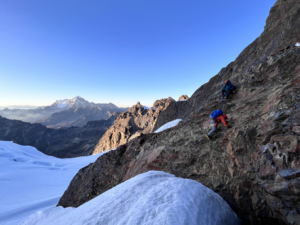 stints in the mountains are brief. And an advanced expedition would be something in the Himalaya, Alaska, or Peru, where you’re in the mountains for extended periods of time, to high altitude, and/or having extended periods of technical climbing.
stints in the mountains are brief. And an advanced expedition would be something in the Himalaya, Alaska, or Peru, where you’re in the mountains for extended periods of time, to high altitude, and/or having extended periods of technical climbing.
In Bolivia, the mountain stints are between three and 7 days. And, in terms of altitude and technicality of the climbing, Bolivia is a great stepping stone toward the greater ranges. Summits are between 17,000k and 21,000 ft, and often involve a section or two of moderately technical terrain (e.g. a 60m snow slope at 60-70 degrees). We also train ice climbing, travel on glaciers, and often get in some rock climbing. It’s a great way to introduce yourself to this type
of climbing, a perfect next step in your climbing progression.
2. A beautiful blend of culture and climbing
If you go to Alaska, it’s all about the climbing (though I’ll grant that the characters in the local
bar could count as “culture”). If you go on a traveling-type trip, it could be all about the
language and culture. Bolivia expeditions provide a blend of both culture and climbing –
something I’ve come to really appreciate. The first few days of the trip are spent in La Paz and
Lake Titicaca, exploring the city, museums, and architectural sites of the highly developed
Tiwanaku people. All while acclimatizing to new altitudes.

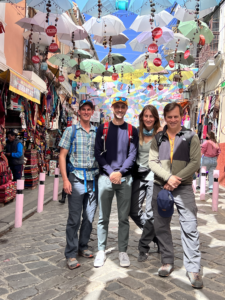
3. “Moderate” altitude
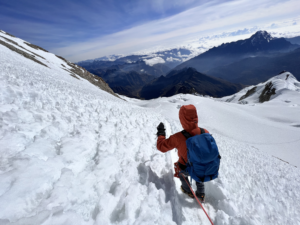 Climbing in Bolivia is a great place to try for a new altitude. Huayna Potosi – the highest peak on the core
Climbing in Bolivia is a great place to try for a new altitude. Huayna Potosi – the highest peak on the core
trip, is 19,974 feet (agonizingly close to 20k!!) and above 6,000m. And Illimani is 21,122 ft. That
makes this a great trip to test yourself at a new altitude, and a good one to do before launching
to 7000m peaks. From flying in to the La Paz airport at 13,500, you’re at altitude the rest of the
trip. Side note, it’s one of the tallest big airports in the world. Many flights in the winter (our
summer) only fly in the early morning to have cooler, denser air for flying. Similar to Phoenix in
the summer – pretty cool, eh? But I digress.
4. Comfortable base camps
At each of the mountains on the itinerary, we establish a base camp. These are well-stocked
and we have a wonderful cook (shout out to Nico!). He prepares meals that are on par with
good restaurants. Eating fresh, good-quality food not only is enjoyable, it also gives us good fuel
for the mountain!
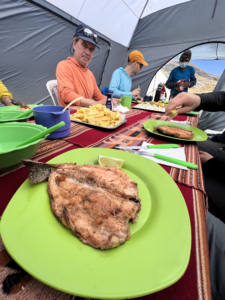

5. Stable Weather
Though located near the Amazon, the Bolivian Andes see dry, stable weather all winter (our
summer). During the peak climbing season, it’s rare to get extended bad weather. Most storm
are brief, and we can often work the climbing schedule to accommodate for a brief storm.
6. Coca Leaves and Dried Llama Fetuses
Have you ever chewed on coca leaves? They’ve been used for millennia in the Andes for energy at altitude. And yes, cocaine is derived from them, but in their natural whole leaf form, they impart only a mild stimulant effect, and have been proven in academic studies to increase physical output at altitude. They’re ubiquitous throughout Bolivia, and a great tool to use at altitude. And quite the unique experience. Just don’t bring any back as a souvenir. Have you ever seen a dried llama fetus? I bet not! Traditional Aymara spiritual tradition believes that burying a naturally aborted llama fetus underneath a new house brings good fortune. There are many traditional customs and religious traditions that we learned about, and every
time I visit Bolivia I learn more about the indigenous culture and traditions. It adds a lot to the
trip.
7. Llamas, Alpacas, and Mountain Dogs
Speaking of llamas, many of the base camps pass through grazing land for llamas, alpacas and
sheep. You end up getting surprisingly comfortable with seeing all these animals while in the
mountains, and often wake up to friendly, gentle alpacas right near your tents. And you get to
see where your alpaca mittens come from!
There are also many friendly dogs in the base camps. One accompanied my wife and I as we
hiked for a few days (!) out of the Condoriri camp. We named him Omar, and he led the way on
steep, rocky trails and guarded our camp every night. Sara, on this summer’s trip, fell in love
with an incredibly gentle and friendly (and very shaggy) dog, who she then took back to La Paz
for a makeover and adopted him! What a sweet dog! He’s happy living his best dog life in
Florida. While there are fewer mountains in Florida than Bolivia, we’re pretty sure Potosi is a
happy doggy.
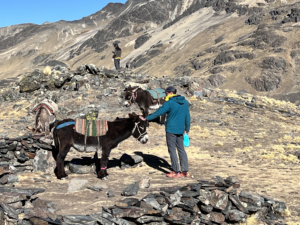
Climb in Bolivia!
Those are the 7 reasons Mike Pond thinks you should climb in Bolivia, among many others! If any of this sounds like it’s up your alley, and fits your goals for the coming seasons, check out our Bolivia Expedition, or contact our office to chat about your future climbs. (877) 873- 5376, info@alpenglowexpeditions.com
